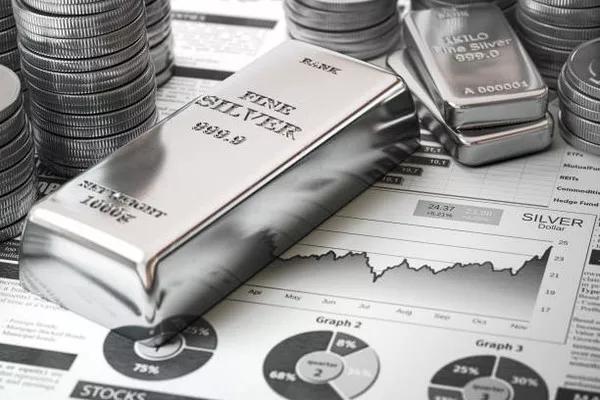In the vast realm of chemistry, elements are the building blocks that compose the diverse array of matter surrounding us. Each element is uniquely identified by its atomic symbol, a concise representation that encapsulates its fundamental properties. One such element, revered for its lustrous appearance and versatile applications, is silver. In this article, we delve into the depths of silver’s atomic identity, uncovering the mysteries behind its symbol and the significance it holds in the world of science.
The Elemental Foundation: Silver’s Atomic Basics
Silver, with the atomic number 47, earns its place in the periodic table as a transition metal. Renowned for its brilliant white luster and exceptional electrical conductivity, silver has been a cherished element throughout human history. The quest to understand its atomic structure and symbol takes us back to the heart of chemistry and the periodic table.
The periodic table, a masterpiece of organization, categorizes elements based on their atomic numbers and chemical properties. Silver finds its place in Group 11 and Period 5, nestled between palladium and cadmium. As we zoom into the microscopic realm of silver, we encounter its atomic symbol – a symbolic representation that encapsulates the essence of this precious metal.
The Silver Symbol: A Gleaming Identity
The atomic symbol for silver is Ag, derived from the Latin word “argentum.” The choice of Ag as the elemental symbol is deeply rooted in the historical and linguistic evolution of the element. The term “argentum” itself conveys a sense of brilliance and purity, reflecting the inherent qualities that have captivated civilizations for centuries.
In the early days of alchemy and the pursuit of the philosopher’s stone, silver held a revered status. Alchemists sought to transmute base metals into silver, believing in its mystical properties. The adoption of Ag as the atomic symbol preserves this historical connection, providing a link to the rich tapestry of human fascination with the element.
Beyond the Symbol: Silver’s Atomic Structure
To truly appreciate the significance of Ag, one must explore the intricacies of silver’s atomic structure. The atomic number, 47, indicates the number of protons within the nucleus of a silver atom. Accompanying these protons are an equal number of electrons, creating a neutral charge. The distribution of these electrons across different energy levels contributes to silver’s unique chemical and physical properties.
The electron configuration of silver is [Kr] 4d^10 5s^1, revealing its placement in the d-block of the periodic table. The outermost electron, residing in the 5s orbital, plays a crucial role in silver’s reactivity and bonding behavior. Silver, known for its relatively low reactivity, owes this characteristic to a stable electronic configuration and a filled 4d subshell.
Isotopes and Variations: Unraveling Silver’s Complexity
While Ag denotes the general identity of silver, it’s essential to acknowledge the existence of isotopes – variations of the element with different numbers of neutrons. The most stable and abundant isotope of silver is Ag-107, constituting approximately 51% of naturally occurring silver. Another notable isotope is Ag-109, making up the remaining 49%.
These isotopic variations contribute to the diverse properties of silver, particularly in the realm of nuclear chemistry. Silver’s isotopes find applications in various fields, from radiography to the production of medical isotopes. Understanding these nuances adds depth to our comprehension of silver’s atomic nature and its role in both scientific and practical domains.
Practical Implications: Silver’s Application in Modern Science
The allure of silver extends beyond its aesthetic appeal, finding practical applications in modern science and technology. The exceptional conductivity of silver makes it an integral component in electrical and electronic devices. From conductive inks to high-performance circuitry, silver’s contribution to the technological landscape is indispensable.
Furthermore, silver’s antimicrobial properties have been harnessed for centuries. In the medical field, silver compounds are used in wound dressings and coatings to prevent infections. The bactericidal effects of silver ions have positioned it as a valuable asset in the ongoing battle against antibiotic-resistant bacteria, showcasing the enduring relevance of this precious metal.
See Also: How to Authenticate the Purity of Silver?A Comprehensive Guide
Conclusion
In the realm of elements, silver stands as a testament to the convergence of history, chemistry, and practical utility. The atomic symbol Ag encapsulates the essence of this lustrous metal, drawing from its Latin roots and alchemical mystique. Beyond symbolism, delving into silver’s atomic structure unravels a world of electrons, isotopes, and unique properties that underpin its scientific significance.
As we navigate the intricate landscape of chemistry, the atomic symbol for silver serves as a beacon, guiding us through the ages of human fascination and scientific discovery. Whether in the form of ancient alchemical pursuits or cutting-edge technological applications, silver’s identity remains gleaming, leaving an indelible mark on the canvas of elemental exploration.


